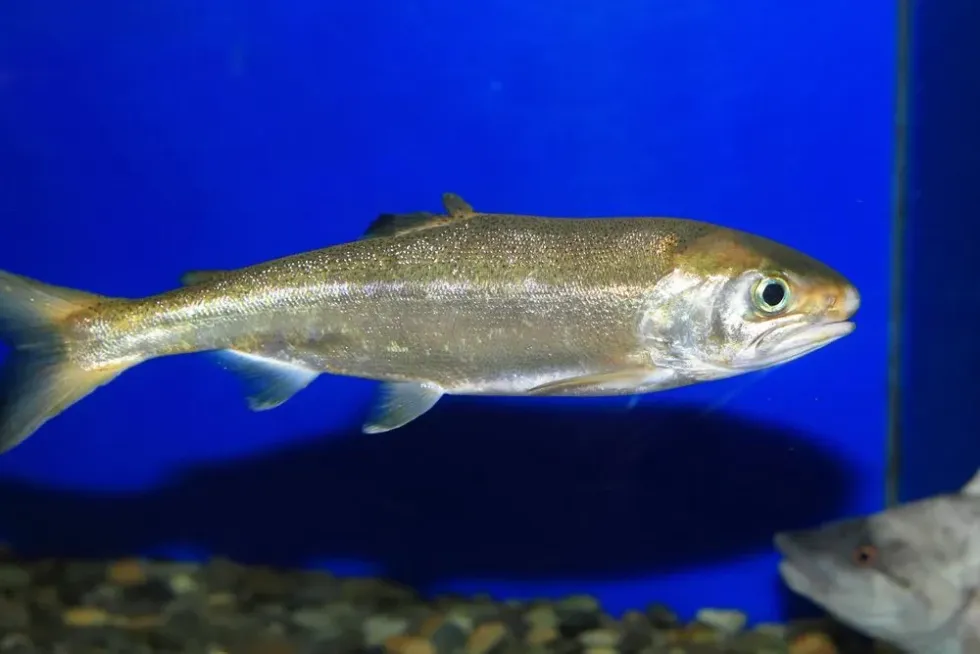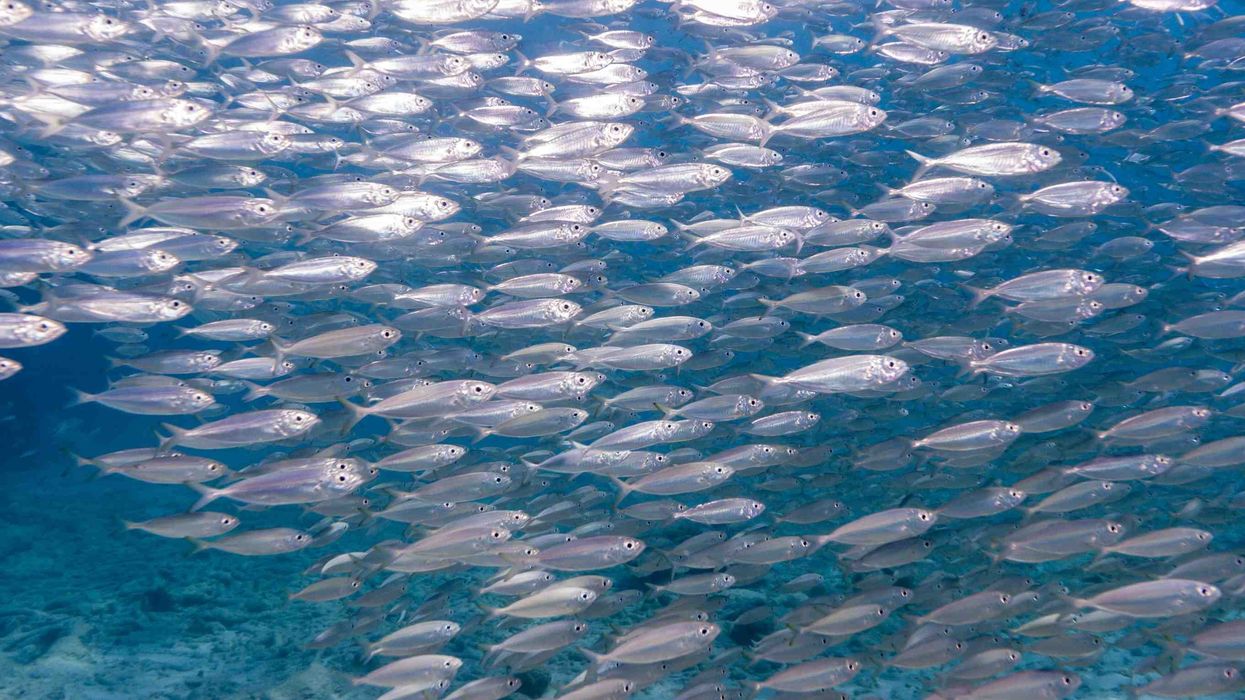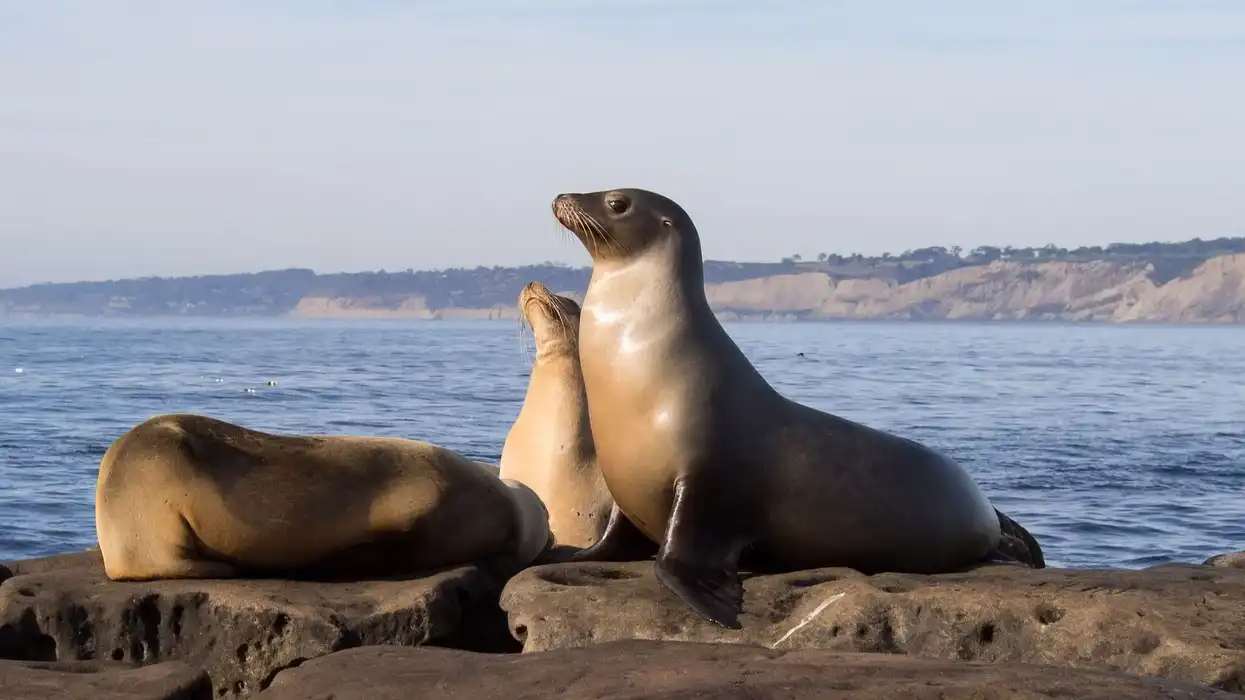The Coho salmon, also known as Oncorhynchus kisutch scientifically, belongs to the family of Salmon. The fish are primarily found in silver color and are also known as the 'Silver Salmon.'
The species can easily be found in different countries of the North American continent such as the United States. Coho salmon can easily be stopped in the US regions such as the central California coast, west coast of Oregon, and Alaska. While some species have also been found in Japan, Denmark, Norway, and Russia.
The species are carnivores and in great lakes, they usually prey on insects and plankton. The fishes found in the Pacific Ocean usually prey on small fish such as sardines, herring, and some also eat different species of salmon.
The Coho salmon is one of the largest species having an average length of 24-30 in (60-76 cm) and an average weight of 7-11 lb (3.2-5 kg), while some of the fishes may reach up to 36 lb (16 kg).
As human interaction is rising rapidly, the population of the Coho salmon species is going down and such instances are found in reservoirs throughout the United States. The species has also listed as threatened under the Endangered Species Act.
Keep on reading to learn more interesting facts about Coho salmon. If you want to know more exciting information about different animals, check out the swai fish and skate fish.
Coho Salmon Interesting Facts
What type of animal is a Coho Salmon?
A Coho salmon fish is a carnivore fish generally found in different parts of the Northern American continent, Japan, Russia.
What class of animal does a Coho Salmon belong to?
A Coho salmon fish, also known as Oncorhynchus kisutch belongs to the family of salmon fishes. They are of the Actinopterygii class and Oncorhynchus genus.
How many Coho Salmon are there in the world?
The exact population of Coho salmon is not known as of now but according to a statistic of 2010, there were more than 4.5 million coho salmon fishes found in the United States and more than 1.7 million fishes in Russia. But over the last few years, the population of coho salmon has been declining in the US.
Where does a Coho Salmon live?
Coho salmon fishes can easily be found in the United States, primarily in the central California coast, west coast of Oregon, and Alaska. Also, the coho salmon species are found in other countries of Northern America, Russia, Denmark, Norway, and Japan. It is also said that these fishes are also farmed at different locations in Europe.
What is a Coho Salmon's habitat?
The Coho salmon habitat includes rivers, oceans, and great lakes. The species is also of commercial importance and can easily be found at fish farms in different European and North American countries. The coho salmon species found in rivers and oceans have differences.
Who does Coho Salmon live with?
The Coho salmon can either live alone or in a group which is known as a shoal. The species living in the ocean primarily live in groups. Unlike other species, those living in freshwater are solitary and prefer to live alone.
How long does a Coho Salmon live?
The exact coho salmon lifespan varies as some live in the wild or oceans whereas some in freshwater. Generally, the average lifespan of a coho salmon is three to four years but if they are kept captive they can live up to five years.
How do they reproduce?
Like other species of salmon, the Coho salmon fish attain adulthood after three to four years. The spawning sites are selected by the adult coho salmon once they return to freshwater from a long journey.
They generally select a suitable site with water flow with gravel which would help to access oxygen more easily. Also, the process of coho salmon spawning takes place generally between the months of September and December.
Female coho salmon deposit their eggs in the gravel nests and on average a female coho salmon can lay up to 1200 eggs. The gravel nests are also known as redds and after six to seven weeks.
The term, Alevin is used to refer to the newly hatched coho salmon babies. It takes around one to two years to observe changes in alevin and this stage is quite tough for the young salmon fish.
What is their conservation status?
Many international organizations such as the International Union for Conservation of Nature have not evaluated the status of the species but The U.S. National Marine Fisheries Service has listed it as threatened.
Also, the coho salmon populations have been declining and are listed as endangered in many ESU's of the reservoirs throughout the United States such as the Oregan coast, central California coast also listed under the Endangered Species Act.
During the mid 20th century, a drastic fall in the population of spawning fishes was also seen.
Coho Salmon Fun Facts
What do Coho Salmon look like?
One of the largest and beautiful species of salmon, the Coho Salmon belongs to the family of Anadromous fish is also known as the 'Silver Salmon' due to its color. Generally, a pink shade appears when they turn into an adult and can also reach up to a weight of 36 lb (16 kg).
They also have very sharp teeth and usually feed on plankton, smaller fishes, and insects. Both fresh water and salt water serve as the habitat of the fish.
How cute are they?
The Coho salmon is one of the adorable fishes. When the fish turns adult, their sides turn bright red. Also, during this stage their back and head turn bluish-green. Some even develop pink and rose shade on their body that makes them more fascinating. This species found in freshwater have different characteristics which makes them more unique.
How do they communicate?
Generally, fishes communicate through their touch and some studies also reveal that coho salmon fishes communicate by the darkening of the skin and sense of smell.
How big is a Coho Salmon?
The coho salmon fishes are one of the largest species after the chinook salmon that are found in the Pacific Ocean. A coho salmon is three times larger than a catfish and the average length of a catfish is 4.7 in (12 cm).
Also, the coho salmon fishes are six times larger than the eel that is majorly found at the Atlantic coastline.
How fast can a Coho Salmon swim?
The speed of a coho salmon is generally determined by the flow of the stream, also the speed of a young coho salmon and an adult coho salmon varies. A young salmon can swim at an average speed of 1.3 mph (2.1 kph) whereas the adult coho salmon speed while swimming can reach up to 7.4 mph (12 kph).
How much does a Coho Salmon weigh?
The average weight of a coho salmon is 7-11 lb (3.2-5 kg) but generally, a few adults can reach the weight up to 18.5 lb (8.4 kg). The species is one of the largest after the chinook salmon fishes.
What are their male and female names of the species?
There are no specific names given to the male and females species of coho salmon.
What would you call a baby Coho Salmon?
People often call a baby coho salmon an alevin. The term, Alevin is used to refer to the newly hatched coho salmon.
What do they eat?
The Coho salmon diet differs as per the habitat. Generally, the species living in freshwater usually feed on small insects and plankton. While the species living in saltwater prey on small fishes such as sardines, herring, sand lance. Also, in many western countries, the species is of commercial importance, and people also feed them vital supplements in their food.
Are they dangerous?
As we know these fishes are carnivores and also have sharp and strong teeth. These teeth can be quite harmful to humans as they can easily bite if someone tries to annoy them. Also, they are solitary and do not like human interaction. Therefore, we should distance ourselves from wild coho salmon.
Would they make a good pet?
Generally, the species belong to the wild habitat and it is not recommended to pet a coho salmon for several reasons. Firstly, the eating habits of the fish are very different from other species, also your pond or aquarium is almost different from their habitat.
They primarily live either in the freshwater of a river, or marine waters of the Pacific Ocean. It would become very hard for humans to handle such a dangerous species as their pet.
Did you know...
The scientific name of fish Oncorhynchus kisutch has been derived from the Russian word, kizhuch which means silver.
People generally eat the meat of a coho salmon. The meat is quite soft and tender to eat and also adds more flavors if cooked well.
The meat of the fist is a bit reddish-orange and is considered as one of the best salmon meats. There are various coho salmon recipes available online, you can check them and start cooking coho salmon.
Which is better Coho or Sockeye Salmon?
Just like the Coho salmon fish is known as the silver salmon, similarly, the Sockeye salmon has also been described as the red salmon and sometimes the blueback salmon. Both of the species have the same habitat and are found in the North Pacific Ocean, are also quite large in size.
While comparing both species, the weight of Coho salmon can range from 7-11 lb (3.2-5 kg), while average sockeye weighs between 5-15 lb (2.3-7 kg).
Sockeye salmon can reach the maximum length of 33 in (84 cm) whereas the maximum length of a salmon coho is 30 in (76 cm). The coho salmon is said to have a milder flavor than the sockeye, but both are nutritious fishes.
Coho Salmon vs King Salmon
The largest species of salmon have the same habitat, found in the Pacific ocean, and the Chinook salmon is also known as the 'King Salmon.'
The King salmon is huge in size as compared to the silver salmon. Also, the meat of both species is widely known for its taste but people prefer the meat of King salmon because these fishes are rich in omega 3 and fatty acids.
We know that the Coho Salmon is mostly confined to the regions of North America and Europe but the King salmon has also been found in countries such as New Zealand.
Here at Kidadl, we have carefully created lots of interesting family-friendly animal facts for everyone to discover! Learn more about some other fish including king salmon, or Kokanee salmon.
You can even occupy yourself at home by drawing one on our Coho salmon coloring pages.










